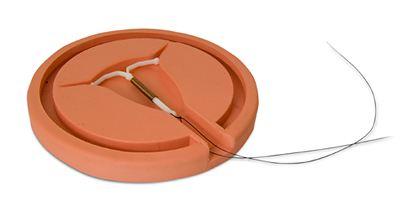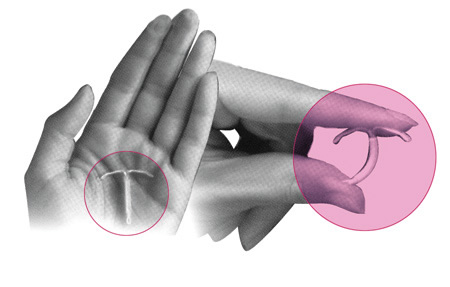Offer women IUDs, hormone shots after abortions: study
Women who get an abortion may be interested in long-acting forms of birth control, but they might not come back for another visit to get them. A new study suggests offering women those types of contraception right away may lower the chance they’ll have another unintended pregnancy.
More than one million abortions took place in the U.S. in 2008, and about half of women getting an abortion had already had one before.
Researchers wanted to see if offering women long-acting reversible contraception immediately after an abortion would mean more of them would opt to use it. They also hoped this would reduce the number of second and third unintended pregnancies seen at their New York City facility.
Long-acting reversible contraception methods include intrauterine devices (IUDs), contraceptive implants inserted in the arm and hormone shots.
“Our patients already had access to effective contraceptives at no cost through a community clinic; however that required organizing an additional visit. That might sound easy, but for many it is hard to arrange childcare and additional time off from work that would permit another visit,” Dr. Carolyn Westhoff told Reuters Health in an email.
Westhoff worked on the study at the Columbia University Mailman School of Public Health in New York.
 “The result was that many women simply didn’t make it back. Therefore we wanted to see what would happen if we could remove the obstacle of an extra visit,” she said.
“The result was that many women simply didn’t make it back. Therefore we wanted to see what would happen if we could remove the obstacle of an extra visit,” she said.
The study included women covered by Medicaid, the government-sponsored insurance program for the poor, who came into the facility for a first-term abortion.
In the first year of the study, women were given advice on various forms of birth control, but had to go to a different clinic if they were interested in long-acting contraception.
The next year women were given similar advice, but they were also offered the option of getting an IUD, implant or hormone shot immediately following the abortion, in the same facility.
Throughout the study period, women had equal access to other forms of birth control like condoms and the Pill, the researchers wrote in the journal Contraception.
Of the 407 women seen the first year, 135 were interested in referrals for IUDs, but only 45 actually had them inserted that year. Forty-nine women were interested in hormone shot referrals, but only one had the injection. Implants were not available.
 Out of 405 women who were seen the next year and offered long-acting contraception immediately, 152 had IUDs inserted the same day. Another 33 had implants inserted and 17 women were given hormone shots.
Out of 405 women who were seen the next year and offered long-acting contraception immediately, 152 had IUDs inserted the same day. Another 33 had implants inserted and 17 women were given hormone shots.
The researchers followed women in both groups for one year after their initial abortion.
Women who didn’t have immediate long-acting contraception access went on to have 111 pregnancies, including 70 abortions and 32 live births. Women who were offered long-acting reversible contraception right away had 62 pregnancies that resulted in 40 abortions and 15 births.
“Women are willing and even eager to adopt a highly effective method when offered,” Westhoff said.
She believes immediate access to long-acting contraception could be implemented across the country.
“We still need to simplify how to access insurance coverage for these more effective contraceptives at the same visit as a procedure. Maybe these results will stimulate some needed changes in insurance,” she said.
New York State Medicaid currently covers abortions and long-acting contraception, but not both if they’re provided on the same day.
“It makes perfect sense if you provide a service that is more convenient for women at a time when they’re very receptive to receiving information about preventing unplanned pregnancies that you’re going to be more effective,” Dr. Paula Adams Hillard told Reuters Health.
Hillard is a professor at the Stanford University School of Medicine and provides pediatric, adolescent and adult gynecology services at the Lucile Packard Children’s Hospital and Stanford Hospitals and Clinics. She was not involved in the study.
Hillard explained that offering long-acting contraception immediately after abortions is both safe and cost-effective. She hopes this study helps prove those concepts.
“There are physicians who still have lots of misunderstandings and have not been taught that it’s okay to insert an IUD immediately after an abortion procedure,” she said. But more providers are learning that it’s safe.
Depending on the type, IUDs remain highly effective for five to 10 years. Implants work for three years. The DMPA hormone shot must be repeated every 12 weeks.
“Analysis after analysis shows the contraception is good public health, it’s good preventive medicine and it’s cost-effective. It just works,” Hillard said.
SOURCE: Contraception, online November 7, 2013
###